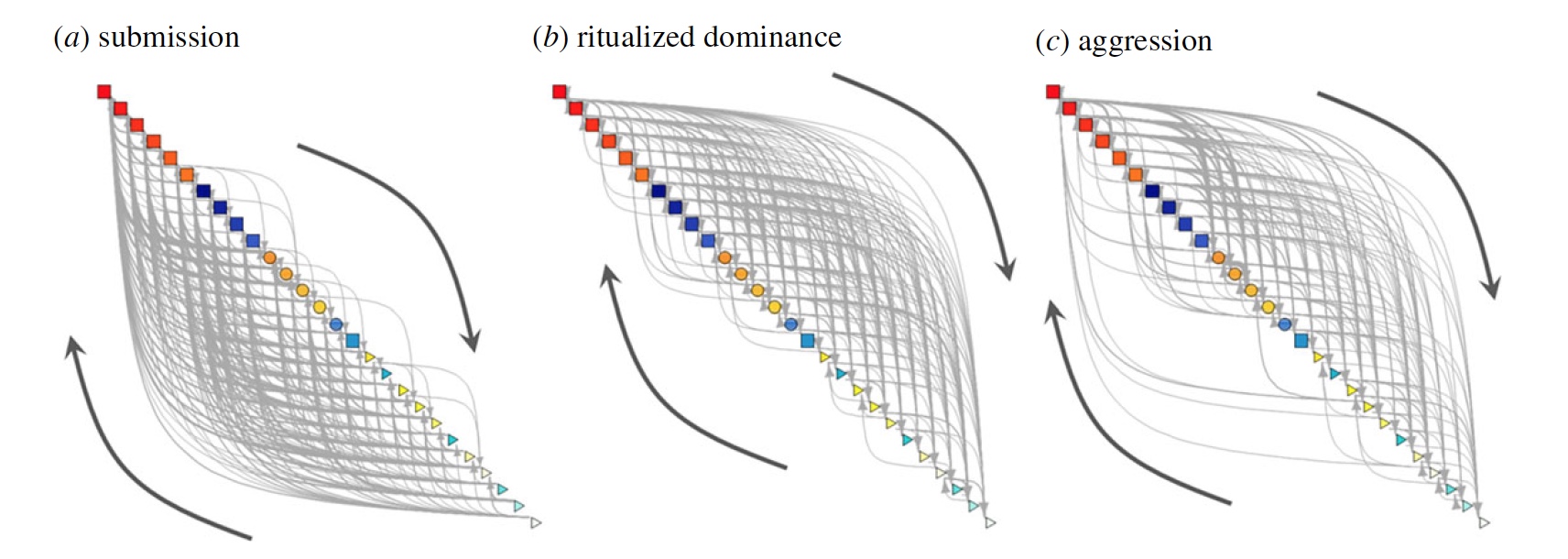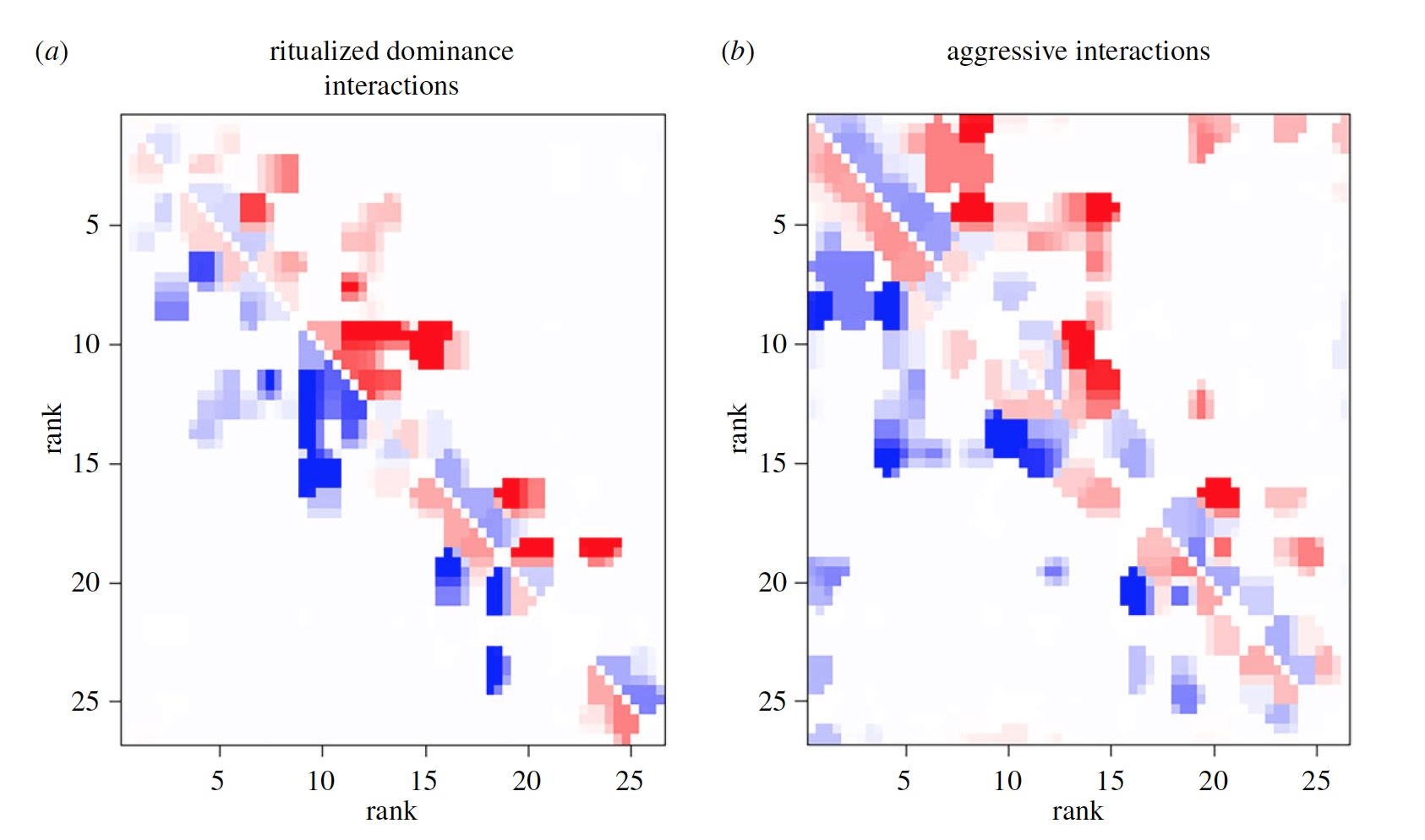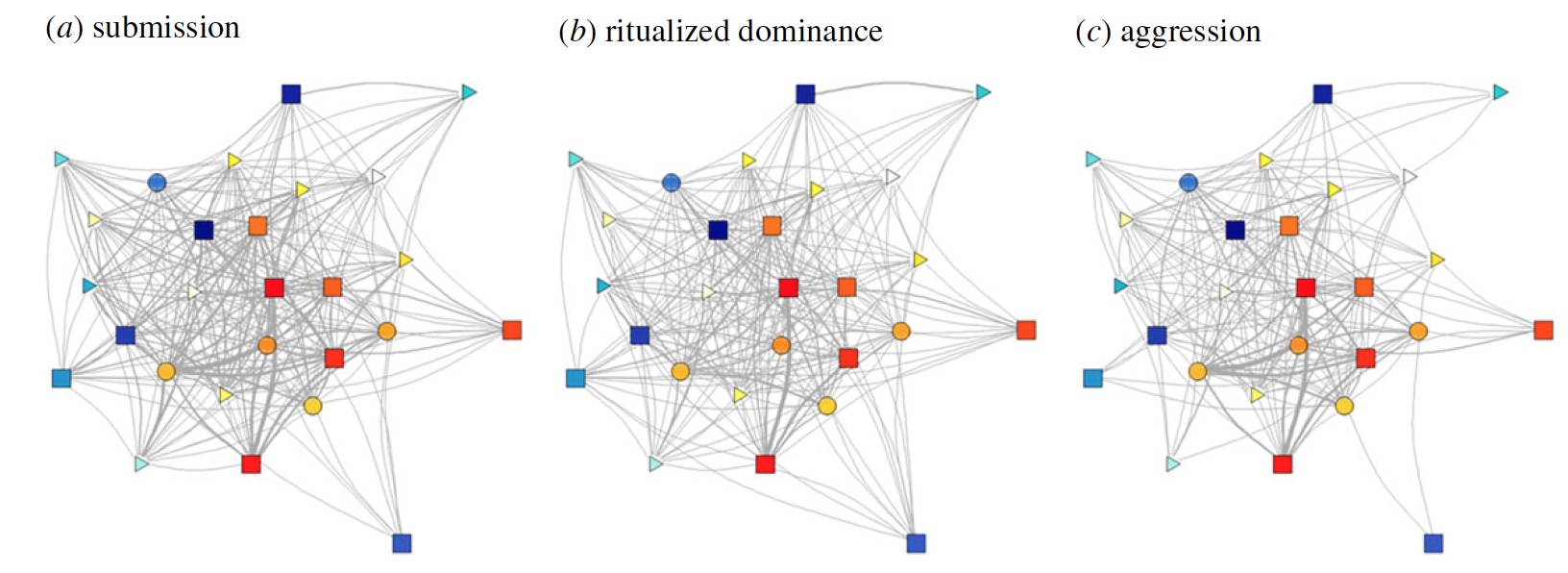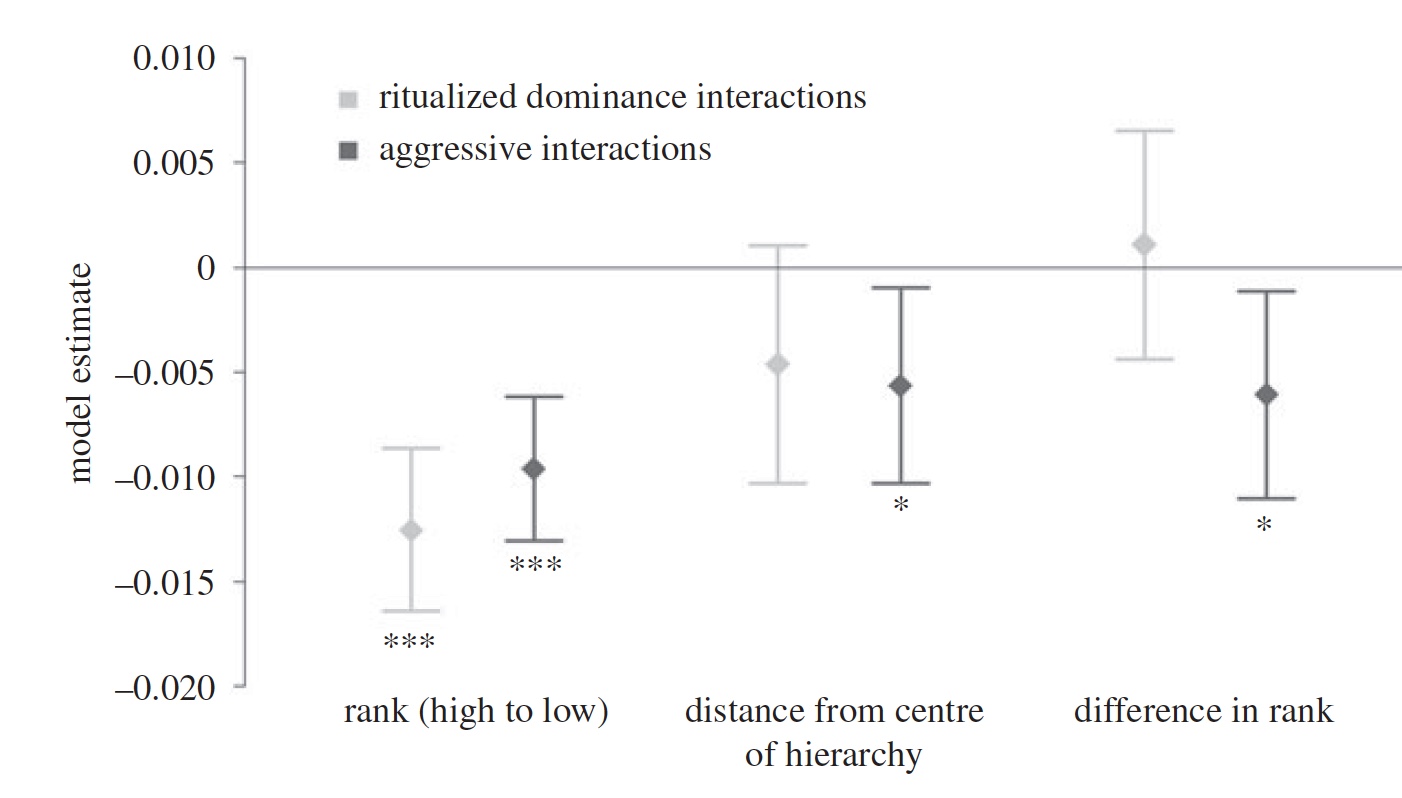Long live the king: the cruel world of hierarchy in a pack of stray dogs

In large groups of people, a leader always appears, consciously or not. The distribution of power from the highest to the lowest level of the hierarchical pyramid has several advantages for the group both as a whole and for individuals taken separately. After all, order is always better than chaos, isn't it? For thousands of years, humanity in all civilizations has implemented a hierarchical pyramid of power in many different ways and on the basis of various aspects - from physical power (army) to spiritual enlightenment (church). Among social animals, there is also the formation of a hierarchy, but more often it has only two steps — the leader and all the others. In the case of dogs, there are more steps, and the relationship between the representatives of each of them is the driving force of the whole pack.
Today we will get acquainted with the study of the hierarchy inside the pack of stray dogs, for which scientists from the University of Exeter (England) spent a whole year. How are the members of the pack distributed along the hierarchy levels, between which levels does open hostility subside and how much does the negative impact of internal conflicts affect the integrity and well-being of the pack? This and not only the report of the research group will tell us. Go.
')
The basis of the study
The main aspect of this study, as you already understood, is the hierarchy, namely the hierarchy of dominance - the system of subordination-dominance in groups of animals.
Such social behavior is not uncommon among animals of various species. As I said, if there is a group of individuals, then there must be a leader in it. This statement, of course, is not a scientific axiom, but in practice it occurs quite often. What are the simple domestic chickens. If you have ever had time to feed chickens, then at first glance they peck at the grain randomly, according to the principle “who is first - that and sneakers”. The only thing that is obvious is the presence of an alpha male (the degree of domination is indicated by the letters of the Greek alphabet, from alpha to omega). However, in the case of chickens there are no two degrees - the alpha male and all the rest. In fact, the hierarchy is quite extensive and includes the alpha female, beta female, etc. During feeding, the first grain bites the alpha male, and then the alpha female, and so on in order of precedence.
The theory of the presence of alpha males and alpha females in the social hierarchy of animals has supporters and opponents who think that we are simply projecting the social traits of people into groups of animals. Nevertheless, there is a hierarchy, and it can be quite complicated and confusing.
Identifying a leader among chickens is not particularly difficult. In many groups, leaders show a certain degree of aggression towards their subordinates. However, this is not a common practice. In some groups, leaders do not want to implement the principle of hedgehogs, but at the same time maintain their status.
The researchers note that theoretical attempts to explain differences in models of agonistic (aggressive) behavior are made by assuming the function of aggression, dominance and subordination.
If aggression is used to directly harm a competitor and to defeat him, and subordination is used to demonstrate a lack of motivation to compete, then it can be assumed that there is an uneven distribution of competitors (dominant and subordinate) in such a model.
Most models of dominant aggression are based on the fact that the hierarchy in a group is always the same. At the same time, aggression-submission patterns may reflect instability or changes in social relationships within a group, which may lead to a change in hierarchy.
Hierarchical relations within the group can be divided into two main models, where there are three active groups (A, B and C):
- A is higher than B, B is higher than C, and A is higher than C is the transitive model;
- A is higher than B, B is higher than C, C is higher than A is a cyclic model.
Changes in the hierarchy structure within a particular group may be associated with a dynamic social and ecological environment. In other words, such changes are almost inevitable, and the degree of their influence on certain layers within the group may differ.
Scientists say that the study of the functions of agonistic behavior and patterns of maintaining the stability of the hierarchy can be done by analyzing the data on the distribution of the behavior of dominance, subordination and aggression within the group of individuals and within each hierarchical layer of the same group.
For this, researchers used data on a pack of stray dogs, since such groups are quite variable regarding sex, age, and family relationships of individuals. It is worth noting, it was previously believed that in stray dogs the hierarchical system is similar to that of wolves, i.e. linear. However, wolves live in groups closely related by kinship, so to speak, and in groups of stray dogs there may be both related individuals and joined aliens.
In their work, scientists conducted an analysis of social networks to perform the following tasks:
- building a social network based on aggressive, ritual dominant (without aggression) and subordinate behavior;
- checking the variability of dominant and aggressive behavior depending on social rank;
- identifying areas of instability in the social network;
- determination of the degree of instability effect on individuals.
Preparation for the study
The main subjects in this study was a pack of stray dogs living in Rome (Italy). Individuals in this flock did not belong to people and did not communicate with them, that is, they had complete freedom of movement and reproduction. However, dependence on people was present in the form of food from passers-by and caring volunteers. During the observations, the number of the flock varied from 25 to 40 individuals, but the main focus of the study was on 27 individuals who stayed in the pack longer than the others.
The observations were carried out in three different social contexts: the presence of food, the presence of receptive (ready to mate) females, and the complete absence of sources of competition.
Social rank, that is, the position in the hierarchy, was determined by observing the behavior of submission, which gives a clear understanding of the "winner" and "loser". The data obtained were used to create social networks, in the community with which exponential graphical models were created.
These models show the probability of interaction (binary networks) or the frequency of interactions (weighted networks) depending on the structural properties of the network, the characteristics of individual individuals (nodes in the graphs) and the relationships between them (edges in the graphs).
Two models were selected for each of the three behavioral categories (presence of food, presence of females, no sources of competition):
- (I) a binary-oriented network model using separate attributes (gender and age) to explain the interactions that an individual causes;
- (Ii) a weighted-oriented network model that uses separate attributes (gender and age) to explain the interactions that an individual causes.
Then two more additional models were created for networks of ritual dominance and aggressive interactions:
- (Iii) a weighted oriented network model using rank to explain the interactions that an individual causes;
- (Iv) a weighted non-oriented network model using a rank to explain the frequency of interactions between dyads (pairs of individuals).
Next, model (III) was used to study how changes in the frequency of dominant or aggressive behavior affect changes in the hierarchical structure within a pack of dogs. 1000 oriented networks for aggressive and ritual interactions were modeled.
Research results
And now, having understood the preparatory work, you can proceed to the most interesting - the results.
First of all, it is worth noting that the scientists were able to confirm the presence of a linear hierarchy of dominance by gender and age in the pack of dogs from oriented networks of subject interactions (image below).

Image number 1. Oriented networks of agonistic behavior in a pack of dogs for subordinate interactions ( a ), ritual dominant interactions ( b ) and aggressive interactions ( c ). The nodes on the graph correspond to the sex of the individual (males - red / yellow and females - blue / green) and age (square - mature individuals, circles - adolescents, triangles - young).
For all three interaction networks, it was the transitive communications that were significantly more likely than cyclic ones, which strongly influenced the occurrence of certain interactions and their frequency (the table below).

Table 1: positive indicators - this model of interactions is more common than expected, negative indicators - this model of interactions is less common than expected.
Networks of subordination behavior demonstrated linear relationships, that is, cyclic (A above B, B above C, C above A) almost did not exist. As expected, the networks of aggressive interactions were the least linear, showing more cyclical relationships.
Adult individuals occupied the upper ranks of the hierarchy due to the relationship of subordination, showing a greater degree of aggressiveness and dominance. Such individuals rarely showed obedience, and they did this in relation to individuals of the same age.
Juveniles occupied the lowest level in the hierarchy, showing a minimum of aggression and dominance towards older individuals. Such behavior of the young individuals could allow only in relation to other representatives of their rank, that is, to the young.
In each age group, males occupied a higher rank, often manifesting ritual dominance. It is curious that this behavior was directed not at the females, but at the other males.
Summarizing, in the pack of stray dogs a linear hierarchy structure was expressed (A above B, B above C, A above C). Older individuals occupied a higher level, the same rule applies to males in relation to females. Manifestations of aggression and dominance were observed in individuals of higher rank in relation to individuals of lower rank. At the same time, within each subgroup of the pack, similar manifestations also occurred.

Image No. 2: Similarities in the proportions of ( a ) ritual dominance and ( b ) aggressive interactions between observations and simulation results.
Data analysis in conjunction with modeling showed that individuals from a higher hierarchical rank are more likely to initiate the behavior of ritual dominance without manifestations of open aggression. But individuals from medium ranks, on the contrary, more often show aggressive behavior, especially regarding individuals close in position in the hierarchy of the pack.
Also interesting observation is the fact that the probability of aggressive behavior in females was higher than in males, if they belonged to a higher rank.

Image No. 3: non-oriented networks showing the frequency of behavioral interactions in a pack of dogs for subordinates ( a ), ritual dominant ( b ) and aggressive interactions ( c ).

Image # 4: The effect of rank, rank distance from the center of the hierarchy and the difference in ranks between two individuals on the frequency of participation in ritual dominance and aggressive interactions in the pack.
As can be seen from the graph above, the manifestation of aggressiveness was more likely on the part of individuals that are ranked closer to the middle of the hierarchy.
For more detailed acquaintance with the nuances of the study I recommend to look into the report of scientists and additional materials to it.
Epilogue
According to the results of the study, it becomes obvious that an elevated level of aggressive behavior is present in the middle ranks of the hierarchy, while in the higher ranks dominance is most common, and in the lower ranks submission. On the one hand, this may be due to the desire to rise higher in the hierarchy, but you should also not discard the fact that the position of the middle rank in the structure of the pack is ambiguous. In other words, alpha will always dominate, omegas will always obey, but gamuts do not have a clear link to a certain behavioral pattern, because their aggressive behavior may be due to the complexity of the networks of relationships within middle ranks.
Another reason for increased aggressiveness among middle-ranking individuals may be a lack of information regarding the relationship between individuals within the whole group, that is, a lack of understanding of accepted norms of behavior. Such a conclusion suggests itself that the majority of individuals in the middle rank are adolescents who are no longer puppies, but not adults either. Thus, their socialization process is fraught with attempts to enhance themselves in the hierarchy in the simplest way - aggression.
It is also worth noting that the population of average rank is the largest compared to the highest and lowest ranks. This implies an increased dynamics of relationships between individuals within this rank, as well as their multiplicity. In such situations, ritual dominance in order to demonstrate its place in the hierarchy does not have such a lasting effect as banal mutilation of its opponent.
At first glance, it seems that the hierarchy in packs of stray dogs resembles pirates from adventure works. There is a captain (alpha), sailors (omega) and all the rest, who are constantly rowdy. However, the hierarchy structure of stray dogs is fairly simple and harmonious, but at the same time it is exposed to the negative influence of social factors (large population in the group and frequent lack of kinship) and environmental factors (lack of food, external dangers and enemies).
In any case, the surest way to avoid confusion in the hierarchy of stray dogs is the absence of stray dogs. Dogs are not wolves, they are no longer wild animals, as evidenced by their evolutionary changes in physiology and behavior. They need us, as we need them. A dog is a man's friend, and friendship is not one-sided, otherwise it is not friendship at all. Therefore, if someone suddenly wanted to have a pet, you need to remember that this is not just a ball of fur with paws and a funny face, but a living being that needs love, care and respect, like any other person.
Friday off-top:
Rescue puppies trying to find food in the garbage bags.
Want to have a dog? Before buying, consider the option to take the dog from the shelter. He will be immensely grateful to you.
Thank you for your attention, remain curious, love animals, and a great weekend everyone, guys! :)
Rescue puppies trying to find food in the garbage bags.
Want to have a dog? Before buying, consider the option to take the dog from the shelter. He will be immensely grateful to you.
Thank you for your attention, remain curious, love animals, and a great weekend everyone, guys! :)
Thank you for staying with us. Do you like our articles? Want to see more interesting materials? Support us by placing an order or recommending to friends, 30% discount for Habr's users on a unique analogue of the entry-level servers that we invented for you: The whole truth about VPS (KVM) E5-2650 v4 (6 Cores) 10GB DDR4 240GB SSD 1Gbps from $ 20 or how to share the server? (Options are available with RAID1 and RAID10, up to 24 cores and up to 40GB DDR4).
Dell R730xd 2 times cheaper? Only we have 2 x Intel TetraDeca-Core Xeon 2x E5-2697v3 2.6GHz 14C 64GB DDR4 4x960GB SSD 1Gbps 100 TV from $ 199 in the Netherlands! Dell R420 - 2x E5-2430 2.2Ghz 6C 128GB DDR3 2x960GB SSD 1Gbps 100TB - from $ 99! Read about How to build an infrastructure building. class c using servers Dell R730xd E5-2650 v4 worth 9000 euros for a penny?
Source: https://habr.com/ru/post/460577/
All Articles